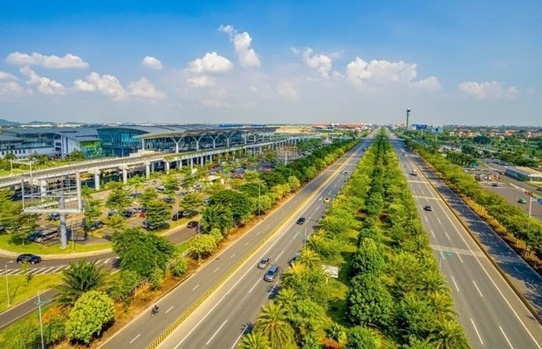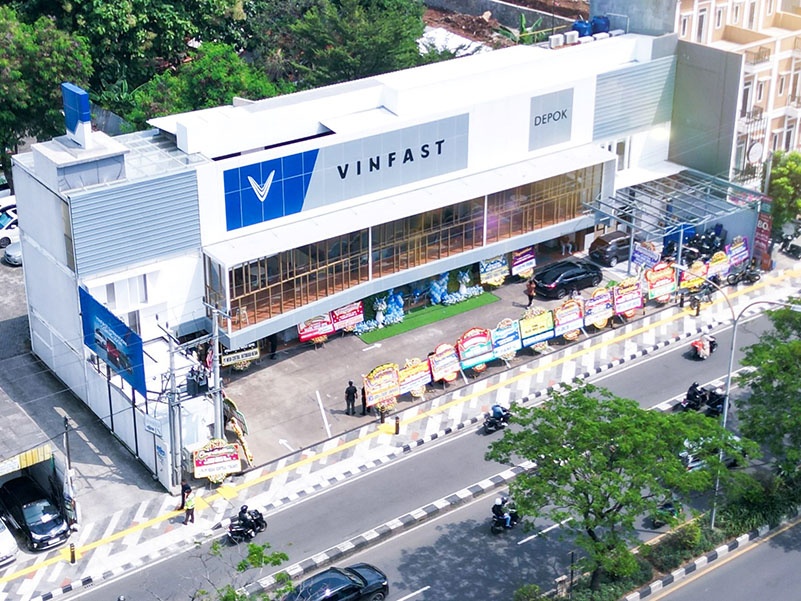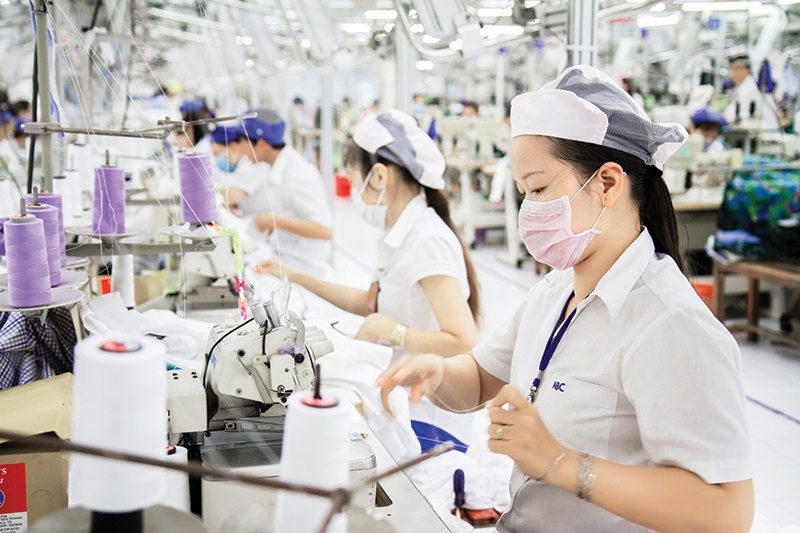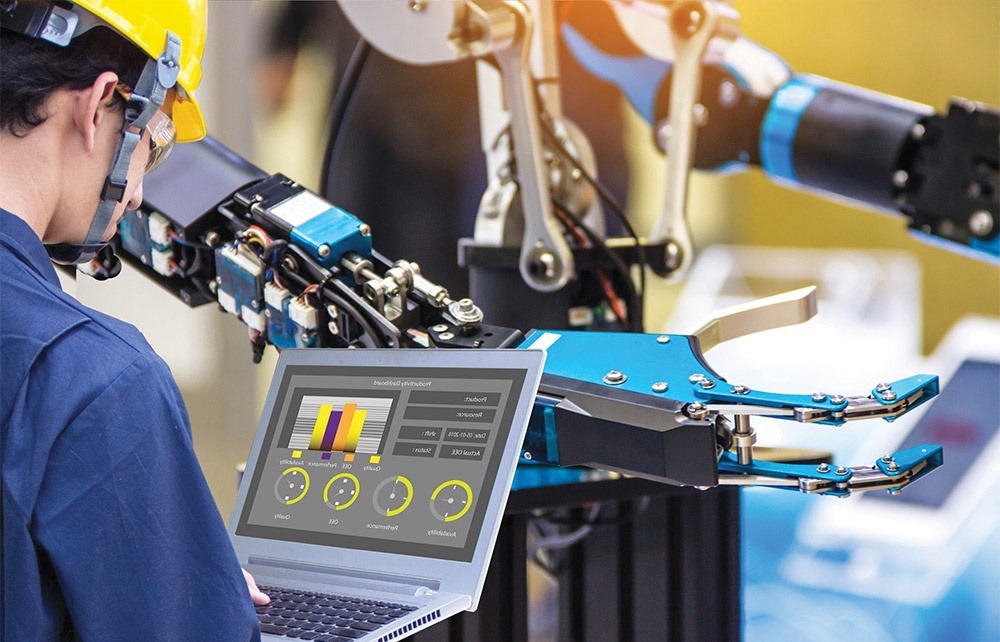Two Vietnamese projects awarded the EDGE certifications

EDGE stands for excellence in design for greater efficiencies, and is a standard that focuses on testing the resource efficiency in buildings.
Launched globally in September, the new system is created for developing countries which have seen a booming development in construction such as China, India, Indonesia, Philippines, Vietnam and South Africa.
IFC’s work to promote green buildings in Vietnam is delivered in partnership with the Switzerland’s State Secretariat for Economic Affairs (SECO).
“So far, the rate of urbanisation in Vietnam has surpassed 30 per cent, while the construction industry consumes up to 25 per cent of total national energy consumption. Therefore, saving energy in the building sector is one of Vietnam’s national goals,” said Nguyen Trung Hoa, director of the Department of Science, Technology, and Environment under the Ministry of Construction.

The Bridgeview Apartment and the FPT complex Danang are the two pilot projects of IFC’s green building system in Vietnam. To achieve the EDGE standard, both designs must reach minimum savings of 20 per cent energy, water, and embodied energy in materials.
Situated in Nam Long Urban Area, the Bridgeview offers 592 apartments. The project meets the EDGE standard, thanks to its energy-efficient amenities like high-performance glazing, energy-saving light bulbs, low-flow showerheads and dual-flush water closets.
Therefore, it is expected to ensure energy use of 20 per cent, water consumption of 22 per cent and achieve materials efficiency of 27 per cent.
Meanwhile, FPT’s building project covers the total area of 5.9 hectares with the aim of providing high-end offices for its employees. Once completed, FPT complex Danang will be capable of serving 10,000 people.
It features proper design for resource savings such as sealed double glazing, dry cooling tower and concrete flooring, which is aimed to achieve resource savings of 21 per cent in energy consumption, 32 per cent in water use and 20 per cent in embodied energy.
According to Autif Sayyed, the Regional Green Building specialist for the East Asia Pacific Region at IFC, the green building market in Vietnam is very promising.
He told the VIR that more developers and investors in Vietnam have shown a very strong interest in the new system because it is easy, affordable and cost-efficient.
In addition, IFC gets a lot of interest from Vietnamese companies who want to establish a partnership with the corporation and promote green building development in Vietnam.
Autiff Sayed shared the VIR that IFC has received endorsement from the Vietnamese government in the green building system, which will bring trust and viability to the system in the market.
The corporation also worked with Ministry of Construction (MoC) on setting up the mandatory Building Energy Efficiency Code [QCVN 09:2013/BXD] for large buildings.
Meanwhile, IFC’s EDGE is voluntary certification standards, which encourages developers to go beyond the mandatory code.
To support the green building programme in the Vietnamese market, IFC has invested directly with developers and investors, who are committed to using the EDGE tools or other resource efficient systems in green buildings.
For example, IFC poured $7.5 million into the building project of Nam Long Investment Corp. The corporation has also teamed up with manufacturers and providers, who have resource-efficient equipment and building materials.
According to Nguyen Ngoc Thanh, design director of Nam Long Investment Corp, the investment capital of the Bridgeview Apartment increases only 1.2 per cent when they adopt the EDGE standards in design.
This amount is, therefore, reasonable for the investors and affordable for the end users.
Vu Linh Quang, sustainable architect of ARDOR Architect, designing the Bridgeview said that IFC’s experienced specialists have given them very helpful advice since the beginning phase of the project.
However, he also mentioned some challenges they have faced. For example, energy-saving materials and equipment are more costly or it is difficult to find the providers of resource efficiency equipment reaching the EDGE standard.
Despite the challenges, the implications of EDGE are enormous.
For home users, the resource-efficient buildings can help them save monthly energy bills on the long-term. They can also improve their productivity or save their health thanks to the green home design.
On a global scale, EDGE helps reduce greenhouse gas emissions and climate change impacts by promoting green building development.
What the stars mean:
★ Poor ★ ★ Promising ★★★ Good ★★★★ Very good ★★★★★ Exceptional
Latest News
More News
- MoIT proposes scheme to boost renewable energy procurement (April 17, 2024 | 14:05)
- Suitable roadmaps can help SMEs in the ESG mission (April 17, 2024 | 08:56)
- Low emissions to stem from advances in rice (April 17, 2024 | 08:49)
- Lotte Rental enters Vietnam's car rental market (April 16, 2024 | 18:46)
- Samsung returns to top of the smartphone market: industry tracker (April 16, 2024 | 18:00)
- VitaDairy partners with KPMG Vietnam on digital transformation (April 16, 2024 | 16:38)
- Boeing says testing of 787 proves aircraft is safe (April 16, 2024 | 16:00)
- PwC rejects allegations on Evergrande audit (April 16, 2024 | 14:39)
- VinFuture Fund launches InnovaConnect 2024 event series (April 16, 2024 | 09:00)
- Vietnam’s agricultural products appeal to foreign customers (April 15, 2024 | 17:04)

















 Mobile Version
Mobile Version